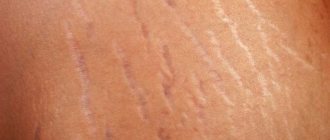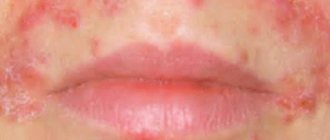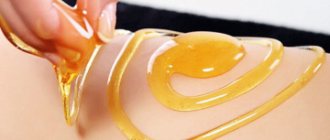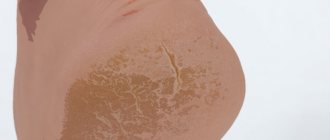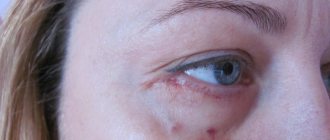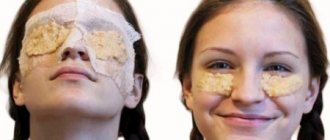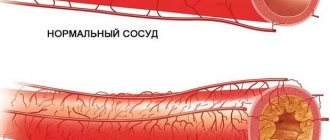Polyp
is a pathological proliferation of the mucous membrane. By its nature, this is a benign formation, however, there is a risk of the polyp degenerating into a malignant tumor.
The mucous membrane lines the inside of the hollow organs of those systems of our body that communicate with the external environment, in particular the respiratory, urinary, reproductive and digestive systems. The functions of the mucous membrane are varied - this includes a protective function, absorption (typical of the gastrointestinal tract), hydration, and some others.
As a result of various reasons, the mucous membrane may become weakened, and then it begins to grow. So the body tries to compensate for the loss of properties of the mucous membrane by increasing its area. The result is a polyp that looks like a mushroom-shaped body on a stalk or on a thick base. Polyps can be either single or multiple (in this case the disease is called polyposis
).
Causes of nasal polyposis
Modern medical science has not yet achieved a final understanding of why polyps form in some cases and not in others. However, there are known factors that contribute to the occurrence of polyps. These factors can be divided into two groups: local and general.
Local causes of the formation of nasal polyps are factors affecting exclusively the mucous membrane of the paranasal (paranasal) sinuses and nasal cavity. First of all, this:
- allergic rhinitis (chronic runny nose of allergic origin). This kind of runny nose is an allergic reaction to dust, pollen, and animal hair. Allergic rhinitis accounts for 80% of polyp formation;
- private colds;
- chronic sinusitis (inflammatory diseases of the paranasal sinuses) - sinusitis, frontal sinusitis, ethmoiditis;
- abuse of vasoconstrictors (drops for the common cold);
- curvature of the nasal septum, blocking the anastomosis of the nasal sinuses;
- fungal infection.
The formation of a polyp may be due to the influence of several factors.
Common factors that contribute to the formation of polyps are:
- individual reactivity (that is, the body’s ability to respond to certain challenges). There is a congenital predisposition to the formation of polyps. Also, the likelihood of polyps increases with age, since life circumstances can contribute to the development of a predisposition to this disease;
- state of the immune system;
- some systemic diseases.
If polyps are detected in the nose, it is recommended to undergo an examination of the intestines; it is possible that polyps have formed there too, but have not yet manifested themselves.
Wen... why on the nose?
Why do wen appear on the nose? There are many sebaceous glands located on it; if they are not working well, a blockage occurs, the fat is not removed out, but accumulates around the gland. This is how the formation of the wen begins.
But there is no exact answer why the glands work poorly and a wen forms. The main reason for the formation is considered to be poor functioning of the metabolic system. Malnutrition, a sedentary lifestyle, infections, and genetic predisposition can lead to disruptions in work. Some experts “blame” certain medications, menopause, pregnancy, and hormonal imbalance for the appearance of formations. The cause is said to be smoking, alcohol abuse and injury. Sometimes it is not possible to find the cause of the appearance of a wen.
Why is it better to remove wen on the nose?
Formations located on the nose, even if small in size, can cause self-doubt, as they become an aesthetic defect in appearance.
Over time, lipomas can increase in size; as they grow, they cause pain and put pressure on surrounding tissues. Larger lesions are more difficult to remove. If the wen is located on the nose, the specialist recommends removing it without waiting for growth.
Symptoms of nasal polyposis
In the early stages, the disease may occur without any noticeable symptoms.
Having arisen, the polyp gradually increases in size, filling the cavities available to it. If a polyp has formed in the paranasal sinus, you may not suspect it until it, having filled the sinus itself, penetrates through its outlet into the nasal cavity.
In advanced cases, polyps can descend from the nasal cavity and nasopharynx below, making it difficult to eat. The pressure of polyps on the walls of the sinuses can be very painful, and on the nasal septum - lead to its deformation.
Typical symptoms of nasal polyposis are:
Nasal congestion
Further growth of the polyp usually leads to difficulty breathing through the nose. Usually they complain of persistent nasal congestion; sometimes the polyp feels like a foreign body in the nose. Often the formation of polyps is accompanied by a decrease or complete loss of smell.
Runny nose
As always, when the nose does not breathe well, a runny nose develops, there is a decrease in hearing and, as a result, a lack of attention. Headaches, increased fatigue, and chronic fatigue are also possible.
More about the symptom
Nosebleeds
Mechanical impact on the polyp (for example, by sneezing or blowing your nose) can lead to damage (especially in the peduncle area), and then the polyp may begin to bleed. If there is periodic bleeding from the nose against the background of constantly difficult nasal breathing, then the cause is most likely a polyp.
Could it be cancer?
If a lump appears on the tip of the nose, this does not always indicate the development of a benign formation. Under certain conditions, such a lump may indicate the presence of an oncological process.
Basalioma
Externally, such manifestations are pustular lesions. Such tumors are also dangerous and require surgery.
Melanoma
They are growths that form from moles. Such seals are classified as cancerous. Therefore, at the first suspicion, a qualified examination and immediate therapeutic measures are required.
Fibrosarcoma and liposarcoma
Characterized by damage to the skin and adipose tissue. It has an infectious nature of origin and manifests itself in the form of a growth.
The tumor is predisposed to slow growth and, compared to other oncological pathologies, is less dangerous to human health. However, it is under no circumstances recommended to leave it unattended.
Kaposi's sarcoma
The formation of extensive dark spots is noted on the nose. Such formations can only occur when infected with HIV, when the disease occurs at the last stage. Such neoplasms cannot be treated.
Why can our articles be trusted?
We make health information clear, accessible and relevant.
- All articles are checked by practicing doctors.
- We take scientific literature and the latest research as a basis.
- We publish detailed articles that answer all questions.
A bump on the nose can be represented by several types of growths. Despite the fact that most of them are benign, they can also be dangerous to the human body and therefore require proper attention.
Treatment methods for nasal polyposis
Polyps that impede normal nasal breathing, as well as bleeding polyps, must be removed. There is no way that would make it possible to reduce the body of a polyp without resorting to surgery. Sometimes small polyps are not removed. But in this case, periodic monitoring of the condition of the polyp is necessary, since its growth can begin at any moment. It should also be remembered that polyps can degenerate into malignant tumors.
An important task is to prevent the re-formation of the polyp. In most cases, simply removing the body of the polyp is not enough. Since its formation is caused by a disruption of the normal functioning of the mucous membrane, it is necessary to establish the cause of this disturbance and eliminate it. Since polyps most often form against the background of allergic diseases, treatment of polyps should be combined with treatment of allergies. It is also important to help strengthen the overall immune system. Therefore, along with contacting an ENT specialist, you may need to consult an allergist-immunologist.
Drug treatment
Conservative (medicinal) treatment methods can be used to slow down the growth of the polyp, but such drugs cannot be used constantly.
Removal of polyps
Removal of nasal polyps in Moscow is possible in the Family Doctor network of clinics. For the treatment of polyps of the paranasal sinuses and nasal cavity, doctors at Family Doctor recommend using the Surgitron radiosurgical device. Removal of nasal polyps using Surgitron does not require hospitalization and can be performed in any of the Family Doctor clinics. If necessary, surgery to remove a polyp can be performed using a laser at a surgical hospital.
Make an appointment Do not self-medicate. Contact our specialists who will correctly diagnose and prescribe treatment.
Rate how useful the material was
thank you for rating
Cost of removing lipomas (fat) with laser
| Laser tumor removal | Prices, rub. |
| Laser removal of papillomas, single warts - Cat. I. difficulties | 1200 |
| Laser removal of papillomas, multiple warts - Cat. I. difficulties | 350 |
| Laser removal of moles, papillomas, warts - Cat. II. difficulties | 700 |
| Laser removal of moles, papillomas, warts - Cat. III. difficulties | 1500 |
| Laser removal of moles, papillomas, warts - IV category. difficulties | 3000 |
| Laser removal of moles, papillomas, warts - Cat. V. difficulties | 4500 |
| Laser removal of moles, papillomas, warts - Cat. VI. difficulties | 6100 |
| CO2 Laser callus removal (per unit) | 6100 |
| Removal of atheroma, lipoma, fibroma, xanthelasma with laser - Cat. I. difficulties | 6 900 |
| Removal of atheroma, basal cell carcinoma, lipoma, fibroma, xanthelasma with laser - Category II. difficulties | 9 400 |
| Removal of atheroma, basal cell carcinoma, lipoma, fibroma, xanthelasma with laser - Cat. III. difficulties | 16 900 |
| Removal of atheroma, basal cell carcinoma, lipoma, fibroma, xanthelasma with laser - IV category. difficulties | 22 400 |
| Removal of atheroma, basal cell carcinoma, lipoma, fibroma, xanthelasma with laser - Cat. V. difficulties | 33 400 |
Make an appointment for laser removal of wen on the nose
- Full name
- Telephone
To remove various tumors, surgical, radio wave and laser methods are used. The surgical method is used to remove large fatty deposits.
A laser is used to remove wen on the nose.
This method will allow you to quickly and painlessly get rid of the wen.
- After it there are no scars left on the skin.
- The laser acts specifically on the tumor and does not affect healthy tissue, eliminating the possibility of accidental damage.
- The formation is excised completely, it can be immediately sent for histology.
- During the procedure, the laser simultaneously coagulates the surrounding tissue, so the intervention is less traumatic.
- The risks of infection are reduced and the rehabilitation period is shortened.
- Laser treatment has a very short recovery period.
- This method almost completely eliminates the occurrence of relapses.
How does laser removal of wen occur?
When removing a tumor on the nose using a laser, local anesthesia is used. A high-precision, small-diameter laser is used.
The operation is quick and takes no more than 15-40 minutes. The duration of the operation depends on the size and location of the tumor.
Usually on the same day the patient returns to his normal routine and does not experience any restrictions.
Photos before and after lipoma removal
4.What to do if you have a nose injury?
A few simple tips will help you cope with pain, swelling and bleeding from a nasal injury.
- Apply ice. Cold will reduce pain and swelling. The sooner this is done after a nasal injury, the better. Cold compresses can be done three times a day for 10-20 minutes (no more). Never apply ice directly to the skin; wrap it in a cloth.
- Keep your head elevated while sleeping. This will help reduce swelling;
- Do not take non-steroidal anti-inflammatory drugs. Ibuprofen or aspirin taken within the first 48 hours of a nasal injury prolongs clotting time and may increase bleeding.
- Do not smoke. Smoking reduces blood supply and delays tissue repair. This means it slows down the healing of nasal injury.
